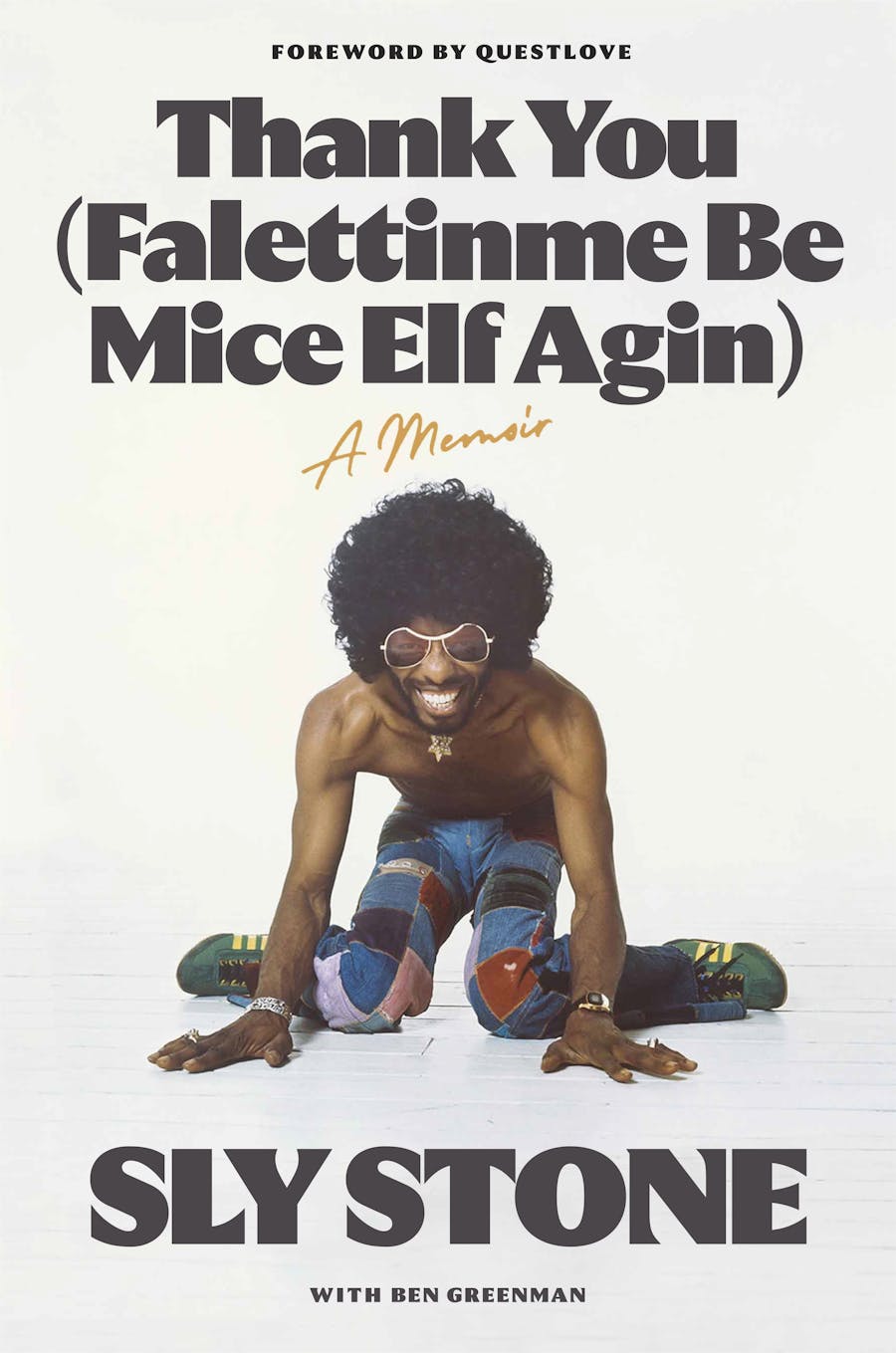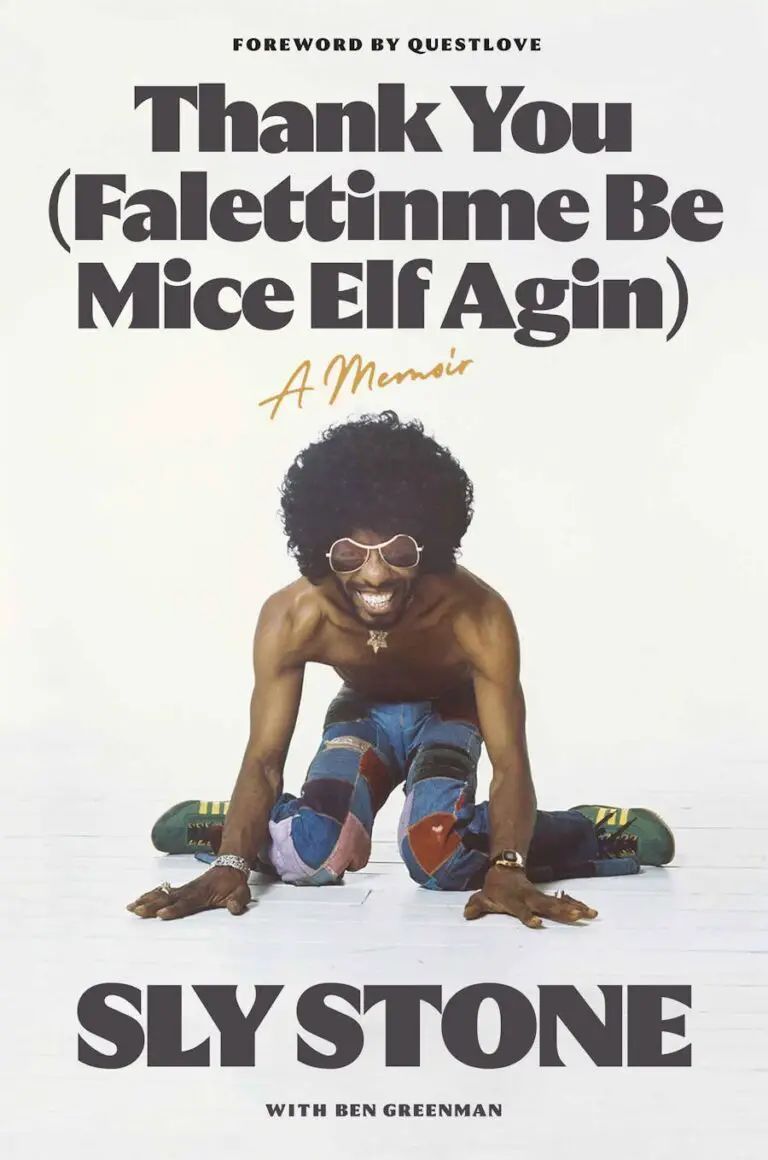

Music critics love to belatedly elevate the contributions of the brilliant burnouts. Syd Barrett, Roky Erikson and their ilk continue to be swaddled in accolades far exceeding the breadth of their slim catalogs and performance on the charts. And as great as the prematurely faded innovators above may have been, none can hold a candle to the impact and influence made – in his time and through to today – by Sylvester Stewart, aka, Sly Stone.

As the songwriter and front man of Sly and the Family Stone, Stewart created many of the most memorable anthems of the ‘60s and ‘70s. They included Billboard chart-toppers like “Everyday People,” “Hot Fun in the Summertime,” “Dance to the Music,” “Stand!,” “Higher,” “Family Affair,” “If You Want Me to Stay” and “Thank You (Falettinme Be Mice Elf Agin).” Sly was also one of the era’s most electrifying and engaging performers. He and his band literally stole the show at Woodstock ‘69 and he is still the only musician to be married onstage during a concert at Madison Square Garden! Importantly, he was also leader of the first fully integrated pop group – one that included black, white, male and female members. And his unique melding of pop, soul and rock inspired legions of his contemporaries and their descendants – from Miles Davis and Herbie Hancock’s forays into rock-jazz fusion to Prince, P-Funk, The Roots, Macy Gray and so many more psychedelic soulsters. But after a rapid rise and few short years atop the charts, Sly spent decades in the grips of an addiction that bankrupted him and his once limitless musical wellspring.
Now, Sly is relating the ups and downs of his star-crossed life in a memoir, Thank You (Falettinme Be Mice Elf Again) (Macmilliam/Auwa Books). Written with Ben Greenman, the New Yorker Magazine writer who worked on the memoirs of George Clinton and Brian Wilson, the book provides an always vivid, sometimes humorous/sometimes truly terrifying trek through his remarkable career and the dark decades that followed.
One of the most interesting parts of the book is his rise to stardom, from his childhood days performing in church with his siblings as The Stewart Four to his first brush with local fame with his teenage doo-wop group, The Viscaynes. Stewart’s artistry definitely benefited from his study of Piston’s bible on harmony, counterpoint and orchestration while at Vallejo Jr. College. He would then go off to a 12-week radio course and become a popular DJ at KSOL and later KYA-Radio in the Bay Area. Interestingly, he credits his on-air chatter style to Lord Buckley and his bebop-inspired comic oratory on the life of Jesus, “The Nazz.” While at KYA, he meets Tom Donahue and joins his Autumn Records as a producer. Here he will hone his musical chops and pop sensibility producing records like The Beau Brummel’s smash hit “Laugh Laugh,” Billy Preston’s “The Wildest Organ in Town” and Grace Silk and The Great Society’s early versions of “Someone to Love” and “White Rabbit.”
While working as a late-night DJ, Sly will put together and hone his Family Stone during long standing residencies at clubs in Redwood City and later Las Vegas. After disappointing sales for their 1967 debut album, “A Whole New Thing,” Sly and the Family Stone will begin to hit with 1968’s Dance to the Music. With their 1969 album Stand!, the band would score a #1 single with “Everyday People,” followed by the #2 single, “Hot Fun in the Summertime,” the latter released in anticipation of their performance at Woodstock ‘69. At Woodstock, Sly and band hit the stage at 3:30 a.m. to wake up the crowd and the film crew which wasn’t quite ready and missed some of the early part of their sizzling set.
Sly’s vicious descent begins when drugs enter the picture, an affliction he will not kick until the COVID-19 era. He says he is introduced to cocaine while recording their debut album in NYC, while also playing a residency at the Electric Circus. But his life truly begins to go off the rails with his move from the Bay Area to Los Angeles. His motto is “Gun in the House, Gun in the Car,” and he also always travels with a violin case full of coke and other illicit substances. He will begin to miss shows (less than as reported by other sources according to Sly) and the band’s live rep and financial fortunes will suffer. His life will really begin to unravel further when PCP (angel dust) enters the picture. With his move to the former mansion of another legendary musician/druggie, John Phillips of the Mamas and the Papas, Sly spends days coked-out in its recording studio, tracking and overdubbing to the point where the tape is in danger of losings its magnetism and music. Here, even in his drugged-out degeneracy, Sly will continue to innovate, including pioneering the use of rhythm machines on tracks like “Family Affair.”
Sly’s life in LA is bedlam, with a litany of dangerous hangers-on wired to the gills. His pitbull will attack his young son but is not put down until after he literally rapes and kills Sly’s pet baboon (Sly does the job tearfully, with one of his many guns). The breakup of his band is also filled with threats of assassinations and car bombings.
After the hits stop coming, Stewart will endure decades of darkness and loss. The IRS will take his Bel-Air mansion and he will sell his song catalog to Michael Jackson to make ends meet. There will be many tries at rehab and he will periodically be brought back into music, with middling success, by George Clinton and longtime friend Bobby Womack. There will be arrests for missed child support payments, drug busts, more repossessed homes and frank discussion of his bizarre re-appearances at Coachella and The Grammy Honors. Sly will try valiantly to hold on to one thing through it all – his beloved mobile home where he continues to work on songs that few will hear.
There is so much here, stuff that is frankly very tough to bear. Sly lays out his truth as best he can remember but it may not be the complete story, as it is only his viewpoint. Much more can be found in Joel Selvin’s Sly and The Family Stone: An Oral History. An expanded edition of the book was released in 2023 and which I reviewed here. In it, more than 40 of Sly’s band members, friends and family tell the story in all its early glory and latter-day gory, offering a complement to Sly’s own recollections and opinions.
My one regret is that Sly didn’t spend more time dissecting his music. Stewart was one of the truly great innovators of the halcyon days of ‘60s and ‘70s music, someone whose spirit and sonic DNA is, much like The Beatles, a huge influence on all that came after. He was a pioneer in the fusing of once disparate musical genres, a man who crafted chart-ready hooks and lyrics with life affirming messages, a producer who made smart use of the latest music technologies and his bandmate’s talents. He was also a m*therf*cker of a singer, keyboardist and guitarist, as well as a fashion icon who got no less than Miles Davis out of his uber conservative Brooks Brothers suits and into leather pants, fringed vest and oversized sunglasses.
While it is good to hear from the elusive Sly after decades away from the spotlight, his most resonate contributions remain the many fine albums he created in the prime of his career, masterworks you should spend hours marinating in as you read his life story.
The post The Elusive Sly Stone Pens A Sly Autobiography appeared first on NYS Music.








